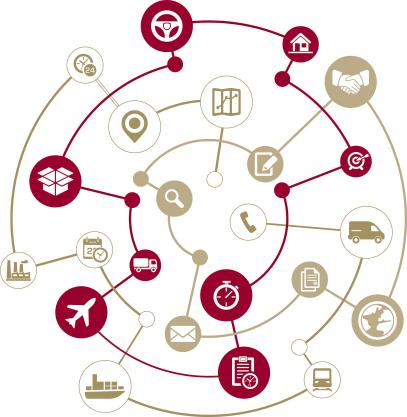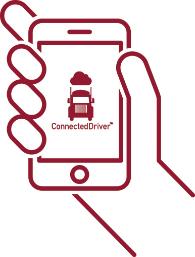
5 New Technologies for Logistics Professionals
Fleet Tracking | Drone Technology | 3-D Printing/Additive Manufacturing | Warehouse Automation | RFID Tags
5 New Technologies Logistics Professional Should Know About
You hear the word logistics a lot these days. The word is so common you even hear it in TV commercials. Based on the way it’s most commonly used, it sounds like logistics is all about shipping. Getting products where they need to be on time is a part of logistics, but it goes much deeper than that.
Logistics is the process of getting the people, processes and parts your organization needs to the right places at the right times. When logistics is working well, your business is more efficient.
These savings come in three major areas.
Effective logistics allows you to:
- Minimize your inventory –When you know your products will arrive on time, you can keep just the amount you actually need on hand.
- Keep your staff working –When your staff must wait for raw materials to arrive, you end up paying them for doing no work.
- Balance your productivity and/or sales –When your production is greater than your sales or organization needs, you end up with excess products you must sell at a discount or take a loss on.
LOGISTICS IS ABOUT INFORMATION
Making logistics work requires managing information effectively. Years ago, paper records were the standard for managing information. The technology was simple; all you needed were a few maps and timetables along with some filing cabinets, paper clips and pencils. One common technique was to spread a map out on the table and represent your shipments with physical pieces, just as if you were playing a board game. Though it may seem comical, logistics is not unlike a game of chess. Just as computers have advanced to the point where they can easily defeat even the best human chess players, technology has revolutionized logistics as well. If you want to be successful as a logistics professional, technology will be an integral part of your job.

5 ESSENTIAL TECHNOLOGIES
There are hundreds of software packages, hardware platforms and types of technology you could apply to logistics. Here are five essential technologies that are crucial to today's logistics professionals.
1. Fleet Tracking
![]() Do you know where your vehicles are? GPS-based fleet management and logistics tracking systems let you monitor and manage your fleet in real time from any internet-connected device. With this kind of power in your pocket, you will always know where your materials are, where they are going and when they will arrive. When traffic or bad weather delays a shipment, you can dynamically shift your personnel to other tasks. It is also easy to examine your routes for potential inefficiencies. Effective fleet tracking is a key part of logistics.
Do you know where your vehicles are? GPS-based fleet management and logistics tracking systems let you monitor and manage your fleet in real time from any internet-connected device. With this kind of power in your pocket, you will always know where your materials are, where they are going and when they will arrive. When traffic or bad weather delays a shipment, you can dynamically shift your personnel to other tasks. It is also easy to examine your routes for potential inefficiencies. Effective fleet tracking is a key part of logistics.
Drivers using the Teletrac Fleet Management Software have cut fuel usage by up to 30%.
Reduced driver overtime by 15% and increased productivity by up to 12%.
 When challenged with a changing product mix and expansion into new markets, CVS Caremark turned to Ryder Dedicated for help. Not only did Ryder strategically locate distribution centers for CVS, but they improved on-time delivery rates to 99.1%, reduced transport costs, and accelerated deliveries.
When challenged with a changing product mix and expansion into new markets, CVS Caremark turned to Ryder Dedicated for help. Not only did Ryder strategically locate distribution centers for CVS, but they improved on-time delivery rates to 99.1%, reduced transport costs, and accelerated deliveries.
 The Peoplenet Connectdriver app gives drivers remote access to the information they need:
The Peoplenet Connectdriver app gives drivers remote access to the information they need:
Important dispatch updates messages from the office, and hourly totals on their mobile devices now their clients, such as Shell, Dow, Dupont, P&G, Unilever and more, can benefit from these improved processes.
2. Drone Technology
 Amazon is pouring millions of dollars into developing unmanned delivery platforms. Google and many other companies are pioneering self-driving vehicles. So far, Google vehicles have driven more than 1.5 million miles with no serious accidents. Even now, small drones are being used to deliver medical supplies in remote areas of Africa and Asia. Automated vehicle technology is advancing at breakneck speed. The only thing delaying the technology in the United States is regulation. It is difficult to imagine a future of drones in technology where these are not relevant.
Amazon is pouring millions of dollars into developing unmanned delivery platforms. Google and many other companies are pioneering self-driving vehicles. So far, Google vehicles have driven more than 1.5 million miles with no serious accidents. Even now, small drones are being used to deliver medical supplies in remote areas of Africa and Asia. Automated vehicle technology is advancing at breakneck speed. The only thing delaying the technology in the United States is regulation. It is difficult to imagine a future of drones in technology where these are not relevant.
3. 3-D Printing/Additive Manufacturing
3-D printing is set to potentially revolutionize manufacturing. How 3-D printing will change logistics? Complex items that once required extensive labor to produce can be created in a single operation by a machine that sits on a desk. Imagine the typical way products are made from metal or plastic today. Parts must be milled or cast, then assembled by hand. A 3-D printer builds all of the pieces required in place, so no assembly is necessary. A 3-D printer can perform this operation without supervision and have items ready for your workers in the morning. 3-D printing is making rapid prototyping practical today. In the future, this technology is set to make mass-customization an accessible reality.
 |  |  |
|---|---|---|
|
Mattel already mass-produces 3-D-printed Barbies and Hot Wheels. 3-D printing technology is now making it logistically easier to produce custom products per customer. |
Andrew Schmahl, the U.S. vice president of PwC Strategy, notes that a normal car has about 30,000 parts, whereas a 3-D-printed car has roughly 50. Think of the impact of taking those parts out of the supply chain! |
In perhaps the most logistically challenged industry of all, space travel will benefit immensely from 3-D printing. With printers on board spacecraft, engineers on Earth can design tools and replacement parts and send the files directly to the printers in space for astronauts to use. |
4. Warehouse Automation
 Logistics automation for warehousing is awesome! How do you arrange the products in your warehouses? Do you use First In First Out, Last In First Out or some other standard technique? Either of these methods will work, but there may be a more efficient arrangement. By using a computer-based algorithm to arrange your warehouse, you can maximize your productivity by using your space in the most efficient way and minimizing the time it takes to retrieve items.
Logistics automation for warehousing is awesome! How do you arrange the products in your warehouses? Do you use First In First Out, Last In First Out or some other standard technique? Either of these methods will work, but there may be a more efficient arrangement. By using a computer-based algorithm to arrange your warehouse, you can maximize your productivity by using your space in the most efficient way and minimizing the time it takes to retrieve items.
5. RFID (Radio Frequency Identification) Tags
The application of RFID technology in logistics by using tags is the modern equivalent to barcodes printed on paper stickers. Just as with a barcode, there is virtually no limit to the type of information these small, inexpensive tags can store. Whether it's origin/destination information, special storage/transportation requirements or some other information, RFID tags are more reliable than paper barcodes. RFID tags can be scanned from a few feet away, and unlike paper stickers, they are immune to ink smudges that can make a barcode unreadable.
Startups in logistics are building tech platforms to make logistics companies compete for your business price, track your shipment in real time and automate the entire process, from inquiry till payment.
-Bhavik Chinai, CEO
Vamaship


 Give to Florida Tech
Give to Florida Tech